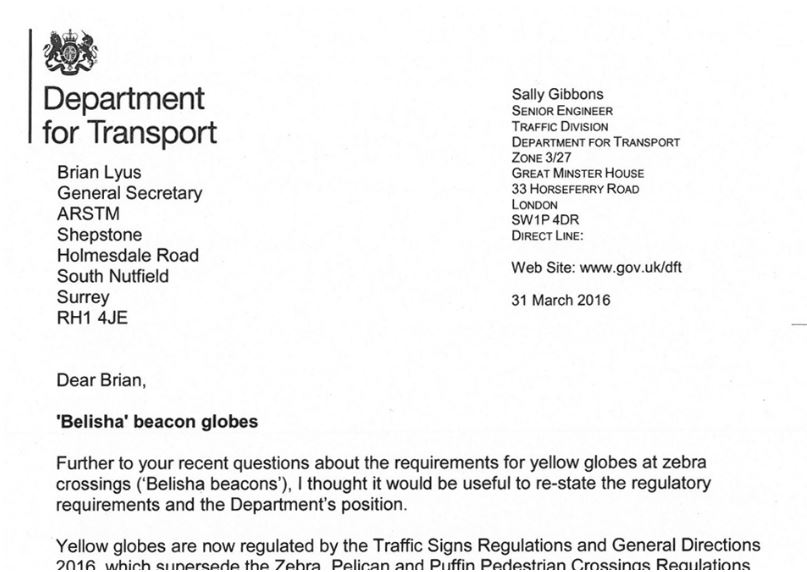![]()
Following a number of queries about new designs of Belisha beacon that have started to appear on UK roads the ARTSM has contacted the Department for Transport for clarification.
The 1997 Regulations have been subsumed into the TSRGD 2106 which came into force today, 22 April 2016. Although the provisions are generally similar, the main difference is that the TSRGD 2016 stipulates that beacon illumination must be internal, and for the first time a diagram is included illustrating the globe.
The ARTSM has been trying to clarify with the DfT its view on what the Regulations permit and have received the attached letter setting out the Department’s official opinion.
“The DfT point out that the dictionary definition of a globe is “a spherical object”. This seems to rule out all devices that aren’t essentially spherical. They also say that a backing board or other device, that the regulations allow to be fitted to a globe to improve its conspicuousness (Schedule 14 Part 4 paragraph 13(4)(a) in TSRGD 2016) would need to be additional to a standard globe. In other words, a standard globe can be supplemented with another device but not replaced by it – the standard globe prescribed by the Regulations must still be present.
They also note that BS 8442:2015 requires that the light source not be visible through the globe. Although it isn’t a regulatory requirement for Belisha beacons to conform to the British Standard, it is of course a condition of ARTSM membership that members comply with all relevant British or National Standards in the manufacture and supply of their goods and services (rule 1(f)(i)).
The ARTSM is always ready to advise members developing new products whether they appear to conform to the Regulations, and in case of doubt to seek the Department’s advice.” Brian Lyus, ARTSM General Secretary
“The design of Belisha beacon yellow globes has not fundamentally changed since they were first introduced, largely because they work well and contribute to the good safety record of our crossings.
It is for local authorities to ensure they procure equipment that meets the regulatory requirements and is safe and fit for purpose. Ultimately, it would be for a court to decide whether or not a particular product complied with legislation.” Sally Gibbons, Senior Engineer Department for Transport.
Read the full letter below:



